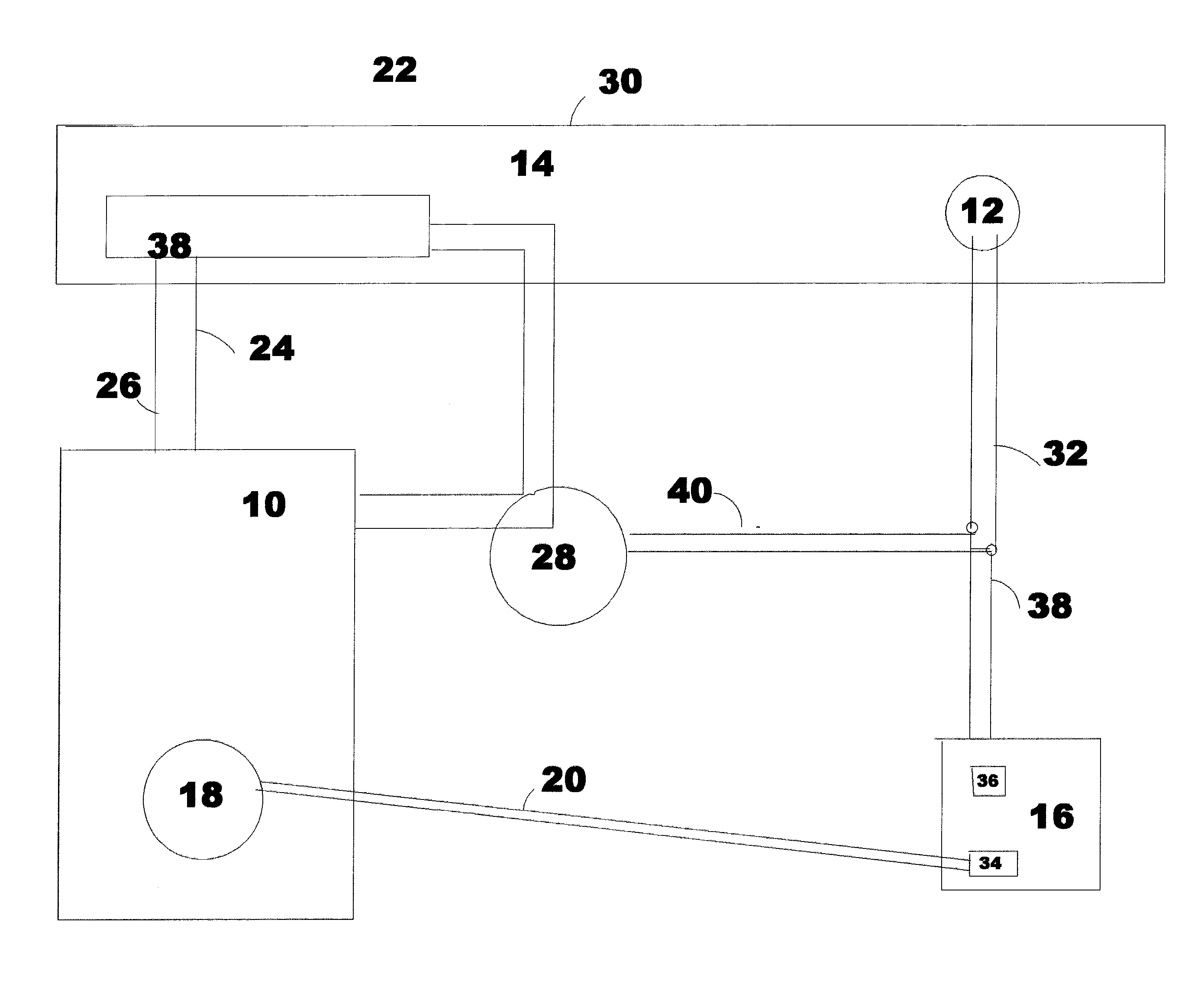Method for Controlling HVAC Systems
a technology of hvac system and control method, which is applied in the direction of heating types, lighting and heating apparatus, instruments, etc., can solve the problems of adjusting the fire time of the unit, not accurately determining the required temperature of the pumped water, and the measurement of the temperature of the source medium, so as to reduce the wasted heat loss of piping or ducts, reduce the inherent delay between sources and the controlled environment, and increase the circulation time
- Summary
- Abstract
- Description
- Claims
- Application Information
AI Technical Summary
Benefits of technology
Problems solved by technology
Method used
Image
Examples
Embodiment Construction
[0046]As shown in FIG. 1, a heating, cooling or ventilation system 10 is used to satisfy the heating, cooling or ventilation needs of a controlled environment 14, such as a house or office building or just a single room. A liquid or gas transfer medium 24, such as air, steam, gas or fluid, may be utilized. As a preferred embodiment, reference will be made to a system for controlling the temperature in a controlled environment. However, the control system of the present invention may be utilized for efficient control of a variety of equipment utilizing a circulating transfer medium to effect a change in a controlled environment. Such other systems may include air filtration, humidification or dehumidification systems.
[0047]The actual temperature in the controlled environment 14 is determined by the BTU exchanged (heat lost or gained) with the exterior environment 22 and the BTUs added or removed by a heating or cooling system 10. The exterior environment 22 may be any space outside t...
PUM
 Login to View More
Login to View More Abstract
Description
Claims
Application Information
 Login to View More
Login to View More - R&D
- Intellectual Property
- Life Sciences
- Materials
- Tech Scout
- Unparalleled Data Quality
- Higher Quality Content
- 60% Fewer Hallucinations
Browse by: Latest US Patents, China's latest patents, Technical Efficacy Thesaurus, Application Domain, Technology Topic, Popular Technical Reports.
© 2025 PatSnap. All rights reserved.Legal|Privacy policy|Modern Slavery Act Transparency Statement|Sitemap|About US| Contact US: help@patsnap.com



